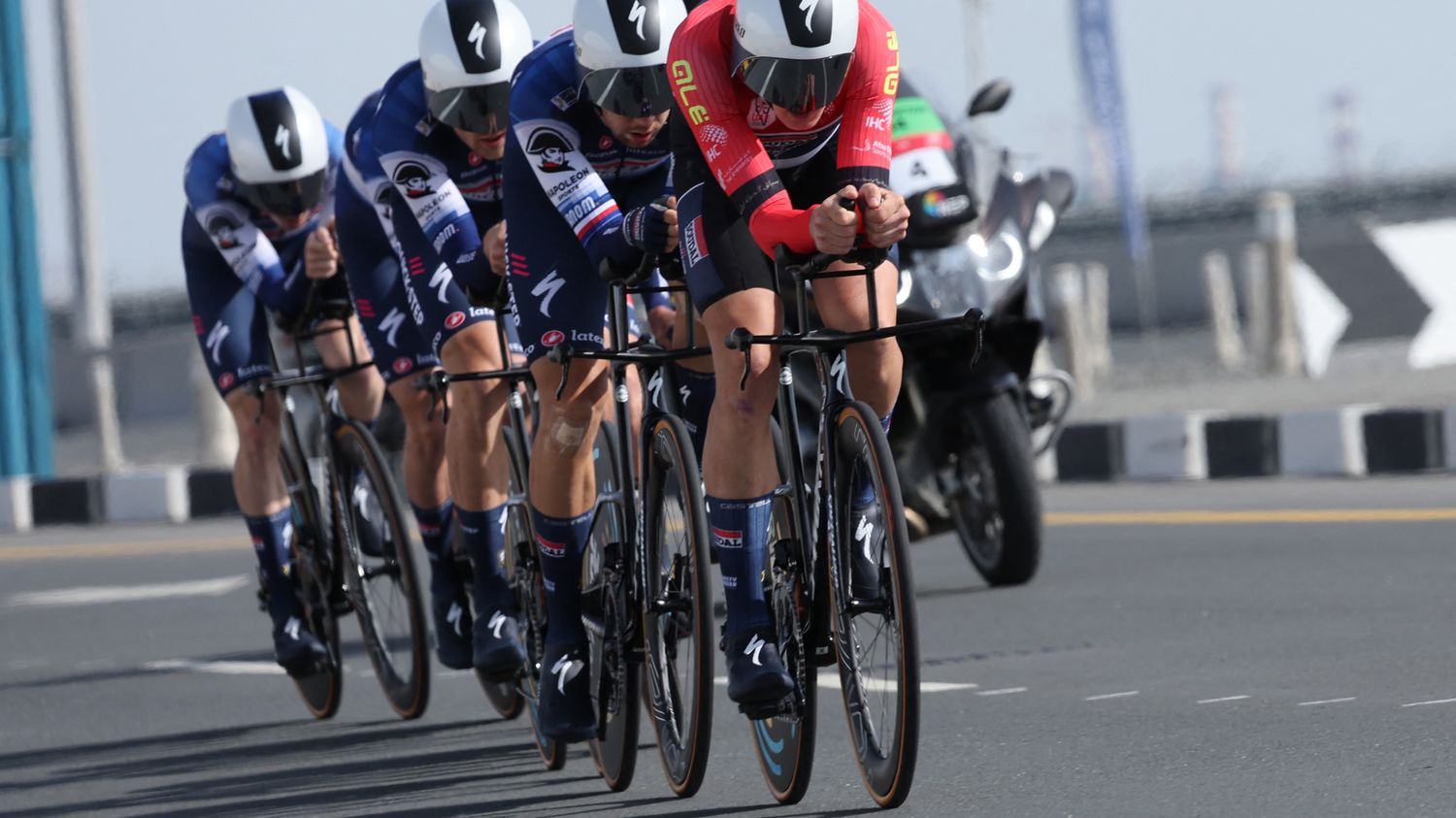During the third stage on Tuesday, the organizer decided that the time of each team will be taken for the first time on that of the first rider to cross the line, and no longer on the fourth.
This is the curiosity of the eight days of racing. For the first time in thirty years, Paris-Nice is offering a team time trial on Tuesday March 7, during the third stage, 32.2 kilometers long around Dampierre-en-Burly. In addition to being a rare occasion, this event will be contested with a brand new rule, tested for the occasion for the first time in the race. Franceinfo: sport explains why this detail of the regulations could ultimately change a lot of things.
1 What is the classic rule?
In a classic team time trial, the time of the team on the stage is taken when crossing the line of the fourth rider out of the team’s seven. This format therefore forces teams to find an average speed that allows (at least) four riders to cross the line together. If a formation rolls too fast, it can quickly lose the weaker elements in the exercise en route. And if the fourth runner, dropped, finds himself lonely, the delay at the finish can be significant for the whole team, despite three runners who arrived well in advance.
2 What is the new rule on Paris-Nice?
For this edition of Paris-Nice, the organizer wanted to innovate, by modifying the rule to create A “individual time run by teams”. Mardi, the clock will not stop when the 4th rider of a team crosses the line, as the usual rule requires, but when the first rider passes.
To put it simply, for the stage victory, each team’s time will be taken from the first rider, who can very well cross the line alone. On the other hand, for the general classification, the times achieved by each runner will be kept individually.
3 What changes for the teams?
Usually, the strategy is the same for all the teams in this event: get four riders to the finish as quickly as possible, and if possible their overall leader. With this new rule, a team leader who excels in time trials, such as Tadej Pogacar or Jonas Vingegaard, could finish the stage alone in order to snatch up precious tens of seconds. “One can imagine that one kilometer from the finish, there are only two riders left in a team and that one of them launches his leader to finish in the sprint. It will be interesting to see what tactics the teams will adopt“, explains to AFP the race director François Lemarchand.

Consequence: formations that have a very good leader in the exercise in addition to an excellent rolling teammate, should be favored, since one or two riders will be able to finish the stage very strongly without worrying about where they rank the fourth. “We is often obliged to keep the 5th rider until the approach to the finish in the event of a problem with the 4th, so you may be tempted to brake to take the hit. Whereas there, as long as the leader is able to follow, we will not slow him down, since they can arrive at two or three on the line”, observes Philippe Mauduit, sports director at Groupama-FDJ.
4 What impact on the race?
This small detail can therefore be important to make the accounts between the favorites on arrival in Nice, while the final victory has always been played within 40 seconds since 2013. But can it really change the race? “It’s a negligible change, advances Philippe Mauduit. There will be little difference, the best teams will be closed in about thirty seconds. I don’t think that Paris-Nice will be played on the team time trial. The mountain is tough enough to create gaps.”
The 32.2 km course, with long fast straights “where the runners will pick up a lot of speed”, according to Philippe Mauduit, could prevent this new version from giving birth to a real revolution. “If it had been a finish at the top of a 4 km climb, it would have been different. There, it remains a flat time: a single runner will always go slower than three or four runners running.”
So, what interest for the organizer ASO to try this new rule? “It allows us to perhaps avoid seeing the team that wins the time trial placing several riders at the top of the general classification”, François Lemarchand advances to AFP. “It can bring appeal because teams can have very different strategies depending on their own goals. At Groupama-FDJ alone, we can imagine four scenarios depending on what happened in the first few days, which are very tricky. It may interest the public to see lots of different scenarios”, concludes Philippe Mauduit.
